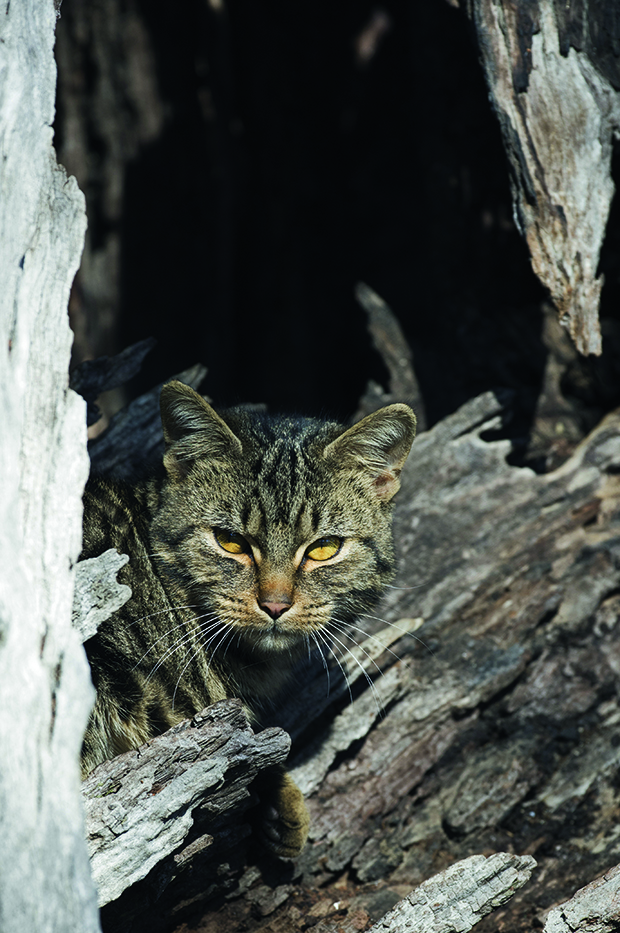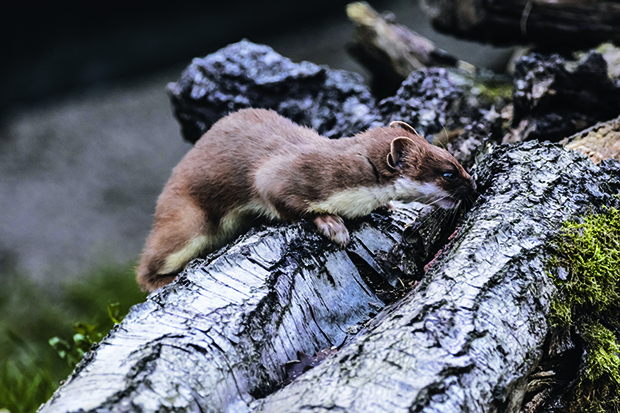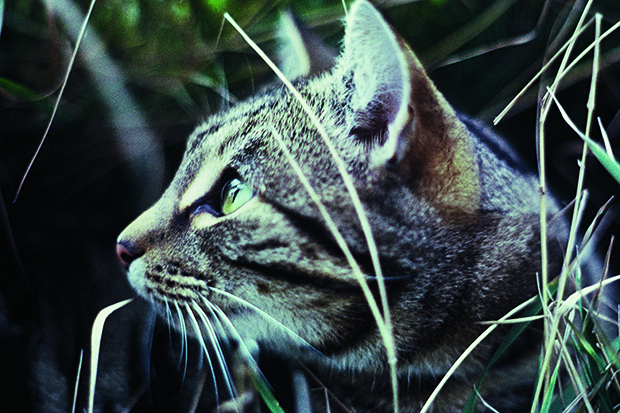The catch with predator control

New research suggests predator control may need to be far more coordinated.
Words: Michael Andrew
Results from a recent study have shown New Zealand’s three most formidable predators can coexist despite aggressively competing for the same resources.
Published by Landcare Research’s Patrick Garvey, Al Glen and Roger Pech, the study showed cats, stoats and ferrets were able to hunt the same prey animals without encroaching on the other’s feeding window or territory. As a collective, the predators were all actively hunting rabbits and rodents through a 24-hour cycle, but had each established their own niche to exploit.
The study was carried out over three seasons at two Hawke’s Bay farms of predominantly grazed pasture with patches of mānuka and kānuka at higher elevations and broadleaf woodland at lower elevations. The sites were 15km apart and had no recent history of predator control. Trail cameras were placed around the sites and loaded with fresh rabbit meat as a feed lure and odour as a social lure.
During the study, cats were seen to be active day and night in all habitats. They consumed the largest portion of resources and appeared to prefer a diet of rodents in forests over rabbits in pasture. Stoats operated during the day but avoided areas where cats were most active, while ferrets hunted at night.
The study’s co-author, Patrick Garvey, said the results could show the implications of New Zealand’s ambitions to eradicate pests by 2050, and whether the removal of one predator may allow another to fill the niche.

Stoats were introduced into NZ in the 1880s in a failed attempt to control rabbits.
“The New Zealand government recently adopted an ambitious goal to eradicate stoats, ship rats and possums from the entire country by 2050,” Garvey said.
“But our study revealed the complex dynamics in invasive communities, where the removal of one community member may benefit another.”
Garvey cited one project in which trappers removed ferrets and cats to understand the effect on stoats. The results showed stoats went from undetected to being the most common invasive predator in the area, effectively taking over the territory left by their predecessors.
The study suggested implications at the other end of the food chain. For example, if aggressive trapping reduced rodent and rabbit numbers, that would compel their top predators to start targeting native birds as an alternative food source.
“Where complex interactions between native and introduced biota occur at landscape scales, upsetting the established equilibrium can have unforeseen impacts,” he says.
“Interspecific competition needs to be considered in any management plan, because controlling all New Zealand’s invasive mammals without unexpected and potentially adverse impacts remains a serious challenge.”
THE PROBLEM WITH FERAL CATS

Swift, stealthy and adaptable, feral cats are apex predators in New Zealand. With an estimated 2.5 million of them across the country from coastal areas to the 3000-metre subalpine zone, they are capable of inflicting extraordinary damage on native fauna in virtually every habitat.
One animal in the Ruapehu region was reported to have killed 107 short-tailed bats in seven days. Their numbers increase rapidly and they are notoriously cautious, making them difficult to control. While they are not a target species for Predator Free 2050, they remain a priority for pest eradication and conservation efforts, which involve using a range of methods to trap them and reduce their numbers including:
• Live capture traps – important in urban areas to determine whether the cat is feral or a stray. They must be checked daily.
• Lethal traps. These must be deemed humane by the National Animal Welfare Advisory Committee (NAWAC). This is currently limited to two models: the Timms Trap and SA2 Cat Trap. Cannot be used in urban areas.
• PAPP (Para-aminopropiophenone) is a toxin developed in New Zealand to control stoats and feral cats. It is considered to be more humane and more targeted than 1080 and is used in very remote areas. The disadvantage is that it does not impact rats and possums and can be harmful to dogs.
The best time to trap feral cats is during the winter when food is scarce. They are attracted to fresh pungent bait like fish, rabbit and minced meat.
For more resources visit predatorfreenz.org.
Love this story? Subscribe now!
 This article first appeared in NZ Lifestyle Block Magazine.
This article first appeared in NZ Lifestyle Block Magazine.
